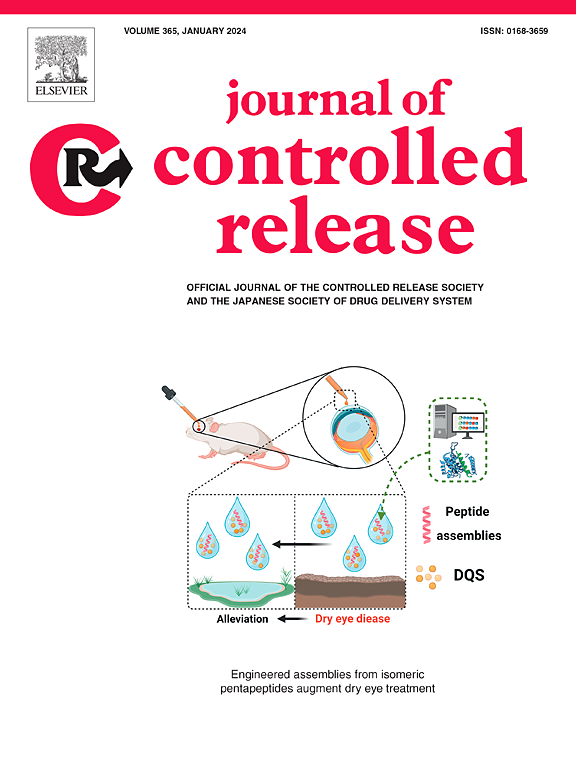Comparing continuous micromixing and extrusion downsizing for PEGylated nanoliposomes remotely loaded with doxorubicin or the steroid pro-drug methylprednisolone hemisuccinate
IF 10.5
1区 医学
Q1 CHEMISTRY, MULTIDISCIPLINARY
引用次数: 0
Abstract
Since the FDA approval of the first nanodrug Doxil® in 1995, twenty subsequent liposome and lipid nanoparticle (LNP) based drugs (of which 10 are nanodrugs), were approved by the FDA. The application of such drug-products was considerably boosted by the mRNA-LNP based vaccines used to stop the COVID-19 pandemic. Research on lipid-based vesicles and nanoparticles for drug delivery dates to the 1970s and has culminated in both continuous flow and extrusion-based fabrication processes for current state-of-the-art GMP industrial production of nanoliposomes and lipid nanoparticles. In this study, we compare these two approaches for the preparation of two PEGylated nanoliposome-based drug-products, keeping all other production steps leading to the final drug-product identical. One of these products, generic Doxil®, is remotely and actively loaded with the anthracycline doxorubicin (an amphipathic weak base) driven by a transmembrane ammonium gradient, while the other is methylprednisolone hemisuccinate (an amphipathic weak acid) remotely and actively loaded via a transmembrane acetate gradient. We demonstrate that a microfluidics-based micromixer approach yields equivalent or even better drug-products, especially since the downsizing by microfluidics is not performed above the temperature range of lipid phase transition. The main difference in the physico-chemical features is that size distribution of the microfluidics prepared PEGylated nano liposomes was significantly narrower and morphological analysis by cryo-TEM confirmed higher homogeneity. An additional advantage of the microfluidic approach is that it is a continuous production. Therefore, it enables the direct production of large volumes of high-quality nano-liposomal based drug-products.


求助全文
约1分钟内获得全文
求助全文
来源期刊

Journal of Controlled Release
医学-化学综合
CiteScore
18.50
自引率
5.60%
发文量
700
审稿时长
39 days
期刊介绍:
The Journal of Controlled Release (JCR) proudly serves as the Official Journal of the Controlled Release Society and the Japan Society of Drug Delivery System.
Dedicated to the broad field of delivery science and technology, JCR publishes high-quality research articles covering drug delivery systems and all facets of formulations. This includes the physicochemical and biological properties of drugs, design and characterization of dosage forms, release mechanisms, in vivo testing, and formulation research and development across pharmaceutical, diagnostic, agricultural, environmental, cosmetic, and food industries.
Priority is given to manuscripts that contribute to the fundamental understanding of principles or demonstrate the advantages of novel technologies in terms of safety and efficacy over current clinical standards. JCR strives to be a leading platform for advancements in delivery science and technology.
 求助内容:
求助内容: 应助结果提醒方式:
应助结果提醒方式:


